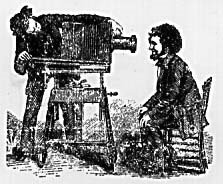Maus by Art Spiegelman is about the life and death of Vladek Spiegelman, Art Spiegelman’s father. Vladek’s memories center on his struggle and will to keep himself and his wife, Anja, alive while hiding in bunkers, dealing on the black market, sneaking out for food, being sent to Auschwitz, and finally being reunited at the end of the Holocaust. Vladek also often remembers Art’s deceased brother, Richieu, whose life was taken when he was very young. As Vladek recounts the story of his close encounters with death as a Jew during the Nazi occupation of Poland and much of Europe, another story comes to light—that of Art and his relationship with his father.
The main issues, themes or ideas raised in these two graphic novels include:
Father-son relationships
Racism
Classism
Sexism
Survival
Power
Identity
Humanity
Art Spiegelman uses a visual style that is both modest and complex. For the majority of the novel, he uses bold outlines of characters with simple cross-sections and lines for textures. As such, the several portions that do not follow this visual style seem like interruptions. These “interruptions” include more detailed images, images of characters as humans, maps or diagrams, and photographs. Spiegelman also uses much visual symbolism which reflects and emphasizes the issues raised by Maus, for example, the depiction of Jews as mice and Germans as cats.
announcements
This blog was created by and for students in an Introduction to Cultural Studies class at the University of Washington. Through an investigation of urban experience and representation--in theory, in graphic novels and in our own "readings" of Seattle's University District--we considered the formation and history of cultural studies as an (anti)discipline, with a special emphasis on the questions, "What does cultural studies do, and how do you do cultural studies?"
If you'd like to know more about the class, the blog or our U-District artifact project, please contact Gabrielle Dean: gnodean@u.washington.edu.
If you'd like to know more about the class, the blog or our U-District artifact project, please contact Gabrielle Dean: gnodean@u.washington.edu.
Subscribe to:
Post Comments (Atom)
blog archive
-
▼
2008
(92)
-
▼
May
(26)
- Seattle U District: City Artifacts Map
- City Artifacts: What and Where?
- Researching History and its Representations...
- Palestine
- Persepolis 1 & 2
- Shutterbug Follies
- A Scanner Darkly
- Maus I & II
- A Scanner Darkly
- Maus I & II
- Shutterbug Follies
- Persepolis 1 and 2
- Postcards: True Stories that Never Happened
- Maus I & II
- Postcards: True Stories that Never Happened
- Persepolis 1 & 2
- Mail Order Bride
- Mail Order Bride: Mark Kalesniko
- Persepolis 1 & 2
- Shutterbug Follies
- Maus I and II
- Palestine
- Postcards: True Stories That Never Happened
- PALESTINE
- Postcards: True Stores That Never Happened
- Shutterbug Follies
-
▼
May
(26)

2 comments:
Good job on mentioning the "Father-son relations" as a key issue. I neglected to mention that in my post. I think it was interesting that you pointed out identity as a main issue/theme/idea.
For our presentation, we should point out Art Spigelman's different art styles in Maus, the "interpretations" versus the dominant cartoon art style.
I think that the "interruptions" in the visual atyle are important and show what things the author thinks are important and wants to emphasize. We should find a good example of this and use it as one of our visuals, and compare it to one of the more traditional visuals in the book.
Post a Comment